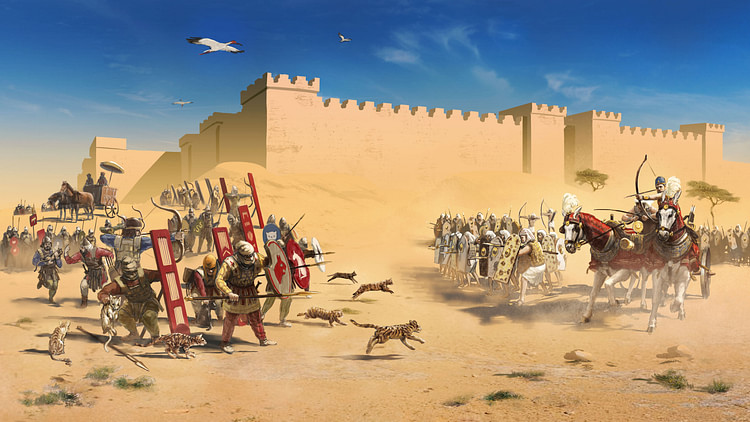The ancient Egyptians had a great reverence for life in all its forms. Life had been given by the gods and reverence for it extended beyond human beings to all living things. Although the Egyptians did occasionally eat meat, and their royalty certainly engaged in the hunt, the Egyptian diet was primarily vegetarian or pescatarian, and this reflected the understanding of the sacred nature of all existence. Even when animals were eaten, thanks were given for the sacrifice, pets were well cared for, and wildlife in nature was respected.
This value is visible everywhere throughout their culture from art to Egyptian religion but is epitomized by the Battle of Pelusium of 525 BCE. This engagement was the decisive clash between the Pharaoh Psametik III (526-525 BCE) and the Persian king Cambyses II (525-522 BCE), resulting in the first Persian conquest of Egypt.

It has been suggested that the battle would have gone to the Persians regardless of the tactics used since Cambyses II was far more experienced in war than the young Pharaoh Psametik III. The victory, however, was due far more to Cambyses II’s knowledge of Egyptian culture than his record as a field commander. The battle was won through a very unusual strategy on Cambyses II’s part: the use of animals as hostages and, especially, cats.
Bastet & Her Cats
Cats were a popular pet in ancient Egypt and closely associated with the goddess Bastet (also known as Bast) who appears in Egyptian art with the body of a woman and the head of a cat or as a sitting cat in a regal pose. She was the goddess of the home, domesticity, women’s secrets, cats, fertility, and childbirth. She protected a household from evil spirits and disease, especially diseases affecting women and children, and also played a role in one’s afterlife.
Bastet was extremely popular throughout Egypt with both men and women from the 2nd Dynasty (c. 2890 – c. 2670 BCE) onward, with her cult centered at the city of Bubastis from at least the 5th century BCE. She was first represented as a woman with the head of a lioness and closely associated with the vengeful goddess Sekhmet, but the two diverged over time until Bastet was imagined as more of a close companion while Sekhmet remained a force of divine vengeance. Even so, this did not mean Bastet could not dispense justice or right wrongs when she saw the need. Egyptologist Geraldine Pinch writes:
From the Pyramid Texts onward, Bastet has a double aspect of nurturing mother and terrifying avenger. It is the demonic aspect that mainly features in the Coffin Texts and the Book of the Dead and in medical spells. The “slaughterers of Bastet” were said to inflict plague and other disasters on humanity. (115)
Among the many ways people could offend the goddess was to harm one of her cats. Cats were so highly regarded in ancient Egypt that the punishment for killing one was death, and as Herodotus reports, Egyptians caught in a burning building would save the cats before saving themselves or attempting to put out the fire. Herodotus says, further, “All the inmates of a house where a cat has died a natural death shave their eyebrows” as a sign of their grief, and cats were mummified with jewelry just as people were (Nardo, 96). It has been suggested that cats were sacrificed to Bastet in the same way dogs were to Anubis, but this claim has been challenged. It is possible the mummified cats found at Bubastis were pets who had died naturally and were brought to be interred at a sacred spot. This precedent is set by graves of humans and animals buried at Abydos in order to be close to Osiris.